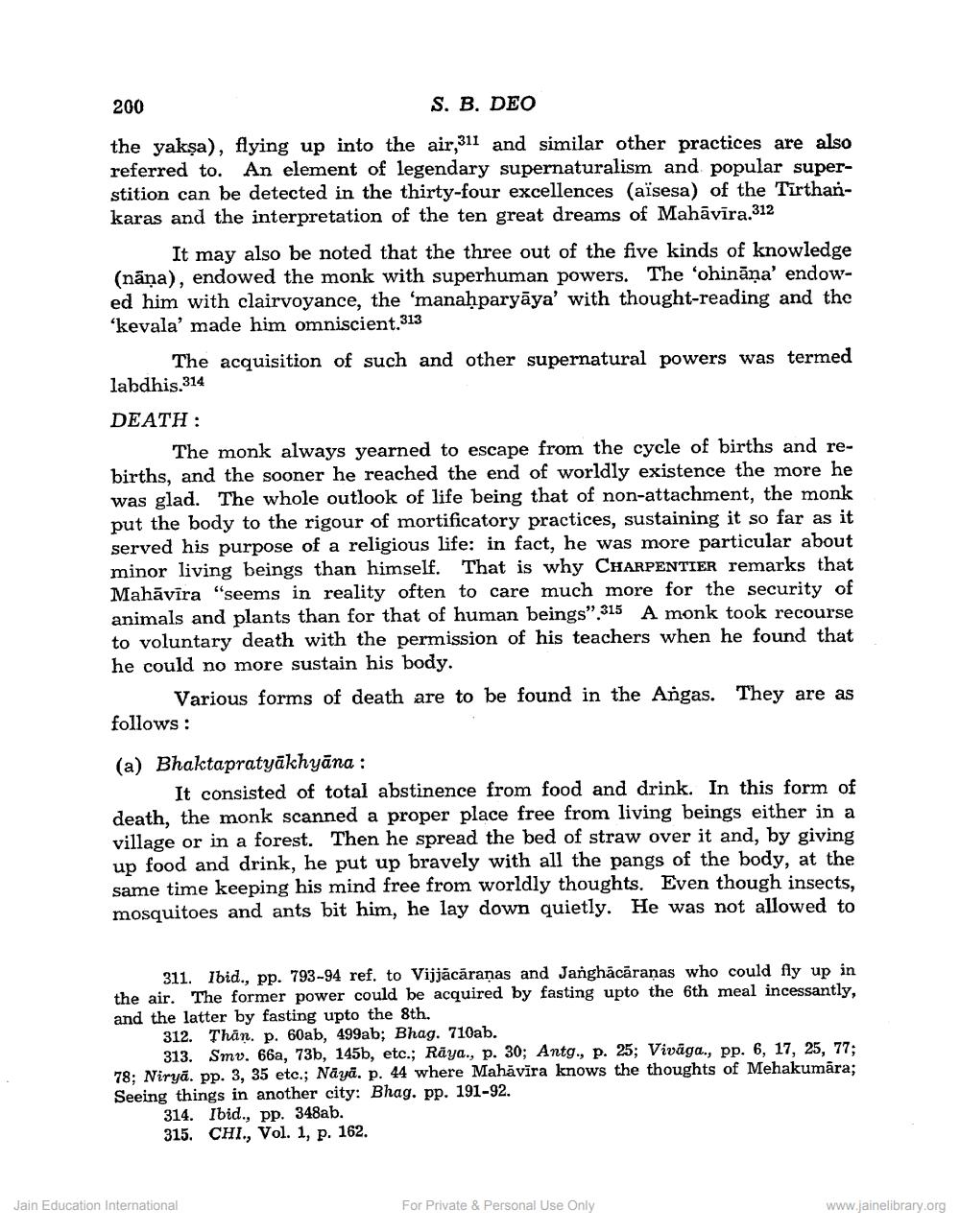________________
200
S. B. DEO
the yakşa), flying up into the air,311 and similar other practices are also referred to. An element of legendary supernaturalism and popular superstition can be detected in the thirty-four excellences (aïsesa) of the Tirthankaras and the interpretation of the ten great dreams of Mahāvīra.312
It may also be noted that the three out of the five kinds of knowledge (nāņa), endowed the monk with superhuman powers. The 'ohināņa' endowed him with clairvoyance, the 'manahparyāya' with thought-reading and the ‘kevala' made him omniscient.313
The acquisition of such and other supernatural powers was termed labdhis.314 DEATH:
The monk always yearned to escape from the cycle of births and rebirths, and the sooner he reached the end of worldly existence the more he was glad. The whole outlook of life being that of non-attachment, the monk put the body to the rigour of mortificatory practices, sustaining it so far as it served his purpose of a religious life: in fact, he was more particular about minor living beings than himself. That is why CHARPENTIER remarks that Mahāvīra "seems in reality often to care much more for the security of animals and plants than for that of human beings": 315 A monk took recourse to voluntary death with the permission of his teachers when he found that he could no more sustain his body.
Various forms of death are to be found in the Angas. They are as follows:
(a) Bhaktapratyākhyāna :
It consisted of total abstinence from food and drink. In this form of death, the monk scanned a proper place free from living beings either in a village or in a forest. Then he spread the bed of straw over it and, by giving up food and drink, he put up bravely with all the pangs of the body, at the same time keeping his mind free from worldly thoughts. Even though insects, mosquitoes and ants bit him, he lay down quietly. He was not allowed to
311. Ibid., pp. 793-94 ref. to Vijjācāranas and Janghācāranas who could fly up in the air. The former power could be acquired by fasting upto the 6th meal incessantly, and the latter by fasting upto the 8th.
312. Than. p. 60ab, 499ab; Bhag. 710ab.
313. Smv. 66a, 73b, 145b, etc.; Rāya., p. 30; Antg., p. 25; Vivāga., pp. 6, 17, 25, 77; 78; Niryā. pp. 3, 35 etc.; Näyä. p. 44 where Mahāvīra knows the thoughts of Mehakumāra; Seeing things in another city: Bhag. pp. 191-92.
314. Ibid., pp. 348ab. 315. CHI., Vol. 1, p. 162.
Jain Education International
For Private & Personal Use Only
www.jainelibrary.org




